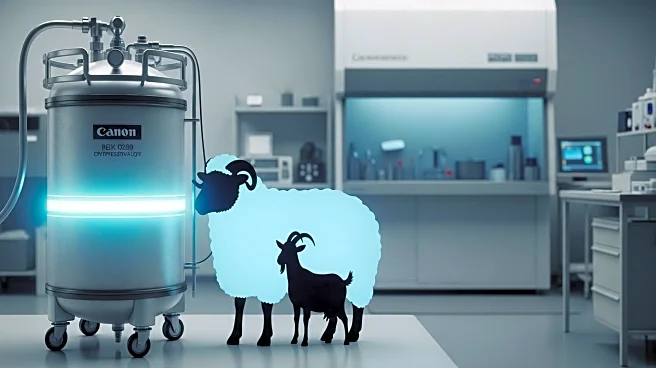What's Happening?
The global market for ovine and caprine artificial insemination is projected to grow significantly, reaching USD 2.31 billion by 2034. This growth is driven by increasing demand for genetic improvement in sheep and goats, aimed at enhancing productivity and disease resistance. The market benefits from advancements in reproductive technologies, including improved cryopreservation methods, which allow for longer storage and global distribution of semen. Europe currently dominates the market, supported by advanced breeding programs and strong governmental backing. Artificial intelligence is also playing a role in transforming the market by improving genetic selection and breeding efficiency.
Why It's Important?
The growth of the ovine and caprine artificial insemination market is crucial for the agricultural sector, as it enhances genetic traits and productivity in livestock. This has significant implications for meat and dairy production, which are vital components of the global food supply chain. The adoption of advanced breeding techniques and AI-driven technologies can lead to more efficient and sustainable farming practices, benefiting farmers and consumers alike. Additionally, the ability to store and transport semen globally facilitates genetic diversity and improvement, which is essential for adapting to changing environmental conditions and market demands.
What's Next?
The market is expected to continue expanding, with Asia Pacific identified as the fastest-growing region due to rising urbanization and increased demand for meat and dairy products. Further advancements in genetic improvement technologies, such as sexed semen and genomic selection, are anticipated to drive economic growth in the livestock sector. The development of more efficient breeding methods and the integration of AI technologies will likely enhance productivity and profitability for farmers, while also addressing challenges related to disease control and biosecurity.














